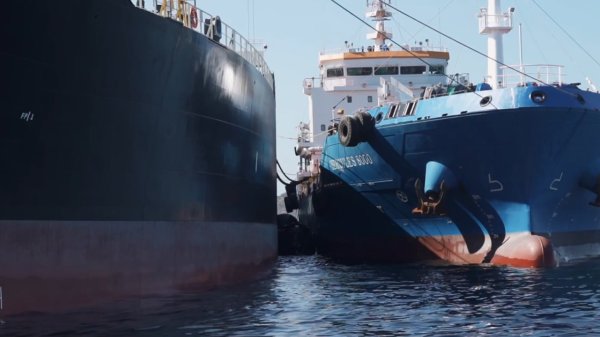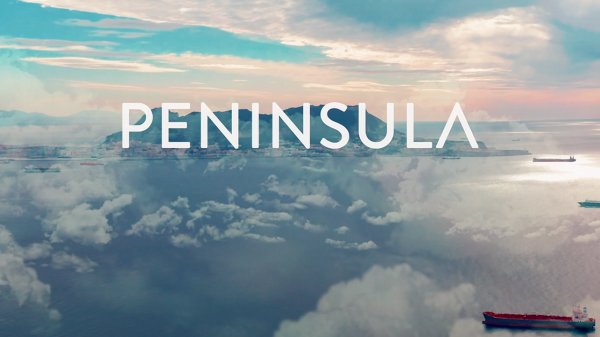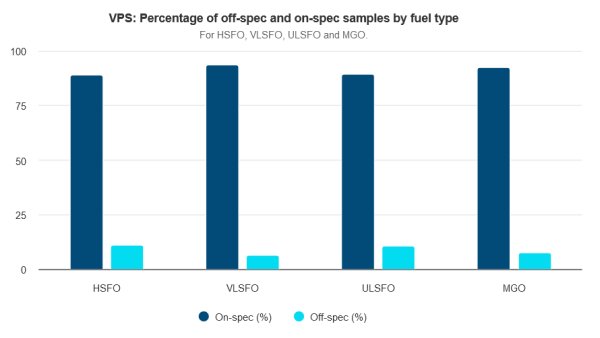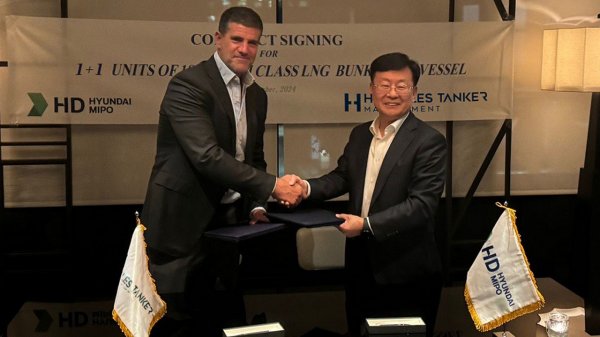New 'Scrubber Ready' class notation announced
New standard is designed to help shipowners prepare their newbuildings for the installation of a scrubber.
DNV GL has created a new class notation to help shipowners prepare their newbuildings for the installation of a scrubber. Named, SCRUBBER READY, DNV GL says the new standard ensures that the necessary preparations are in place for a smooth and cost-efficient scrubber retrofit at a later stage.
"There is no doubt that stricter emissions regulations for sulphur oxides are here to stay," commented Knut Ørbeck-Nilssen, CEO at DNV GL - Maritime. "This new SCRUBBER READY class notation gives shipowners the flexibility to minimize their initial investment when ordering a newbuilding, while at the same time having the confidence that their vessels are already on the track to easy compliance with incoming emissions regulations."
"Ship managers have to factor in many considerations when planning for a potential future scrubber installation, from space and stability requirements, to fire safety, piping, corrosion resistance, and the effect on the main engine," remarked Hans Jacob Horgen, responsible engineer at DNV GL for exhaust gas cleaning rules. "It is very important to have an overview of the design and an understanding of how the system will interact with the engines and auxiliary parts of the machinery system. We also offer scrubber advisory services to support our customers, from building the business case, to risk assessment of the design, installation, commissioning, hardware-in-the-loop testing of the control system, right through to the system entering into operation."
Part of the new DNV GL rules for classification, the SCRUBBER READY notation can be awarded to ships that have planned and partly prepared for the installation of an exhaust gas cleaning system (EGCS) for the removal of sulphur oxides (SOx) at a later date.
The notation identifies the general type and category of scrubber systems than can be installed on the vessel. It also details the level of scrubber readiness, with the minimum scope attesting that the space available and future installation arrangement meets class and statutory requirements. This can be expanded to include more extensive preparations, through to a complete review of the scrubber documentation according to main class rules, including the certification and installation of piping and sub-systems.
For shipyards, working with the SCRUBBER READY standard is designed to provide a simple framework within which to offer future-ready ship designs to the market.
DNV GL also offers similar services for LNG-readiness with the GAS READY notation.
Image: AEC Maritime scrubber technology installed on the Scandlines ferry M/V Schleswig-Holstein.
"There is no doubt that stricter emissions regulations for sulphur oxides are here to stay," commented Knut Ørbeck-Nilssen, CEO at DNV GL - Maritime. "This new SCRUBBER READY class notation gives shipowners the flexibility to minimize their initial investment when ordering a newbuilding, while at the same time having the confidence that their vessels are already on the track to easy compliance with incoming emissions regulations."
"Ship managers have to factor in many considerations when planning for a potential future scrubber installation, from space and stability requirements, to fire safety, piping, corrosion resistance, and the effect on the main engine," remarked Hans Jacob Horgen, responsible engineer at DNV GL for exhaust gas cleaning rules. "It is very important to have an overview of the design and an understanding of how the system will interact with the engines and auxiliary parts of the machinery system. We also offer scrubber advisory services to support our customers, from building the business case, to risk assessment of the design, installation, commissioning, hardware-in-the-loop testing of the control system, right through to the system entering into operation."
Part of the new DNV GL rules for classification, the SCRUBBER READY notation can be awarded to ships that have planned and partly prepared for the installation of an exhaust gas cleaning system (EGCS) for the removal of sulphur oxides (SOx) at a later date.
The notation identifies the general type and category of scrubber systems than can be installed on the vessel. It also details the level of scrubber readiness, with the minimum scope attesting that the space available and future installation arrangement meets class and statutory requirements. This can be expanded to include more extensive preparations, through to a complete review of the scrubber documentation according to main class rules, including the certification and installation of piping and sub-systems.
For shipyards, working with the SCRUBBER READY standard is designed to provide a simple framework within which to offer future-ready ship designs to the market.
DNV GL also offers similar services for LNG-readiness with the GAS READY notation.
Image: AEC Maritime scrubber technology installed on the Scandlines ferry M/V Schleswig-Holstein.

|
Martin Vorgod elevated to CEO of Global Risk Management
Vorgod, currently CCO at GRM, will officially step in as CEO on December 1, succeeding Peder Møller. |
|
|
|
||

|
Dorthe Bendtsen named interim CEO of KPI OceanConnect
Officer with background in operations and governance to steer firm through transition as it searches for permanent leadership. |
|
|
|
||

|
Bunker Holding revamps commercial department and management team
CCO departs; commercial activities divided into sales and operations. |
|
|
|
||

|
Peninsula extends UAE coverage into Abu Dhabi and Jebel Ali
Supplier to provide 'full range of products' after securing bunker licences. |
|
|
|
||

|
Peninsula to receive first of four tankers in Q2 2025
Methanol-ready vessels form part of bunker supplier's fleet renewal programme. |
|
|
|
||

|
Stephen Robinson heads up bunker desk at Tankers International
Former Bomin and Cockett MD appointed Head of Bunker Strategy and Procurement. |
|
|
|
||

|
Is your vessel fully protected from the dangers of poor-quality fuel? | Steve Bee, VPS
Commercial Director highlights issues linked to purchasing fuel and testing quality against old marine fuel standards. |
|
|
|
||

|
GDE Marine targets Suape LSMGO by year-end
Expansion plan revealed following '100% incident-free' first month of VLSFO deliveries. |
|
|
|
||

|
Peninsula CEO seals deal to build LNG bunker vessel
Agreement signed through shipping company Hercules Tanker Management. |
|
|
|
||

|
Auramarine supply system chosen for landmark methanol-fuelled tugs
Vessels to enter into service in mid-2025. |
|
|
|
||
Related Links
- · 'Valuable fuel ecomony' for boxships with scrubber retrofit [Insights]
- · PureSOx offers inline scrubber design [Insights]
- · 'Breakthrough' scrubber project for Gibraltar yard [Insights]
- · World's first guide for SOx scrubber-ready vessels [Insights]
- · Clean Marine wins EGCS supply contract [Insights]

